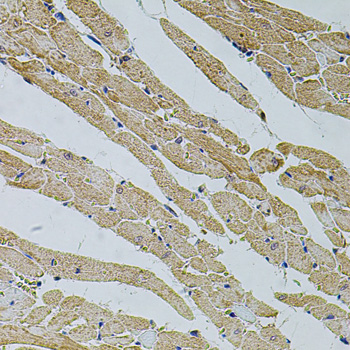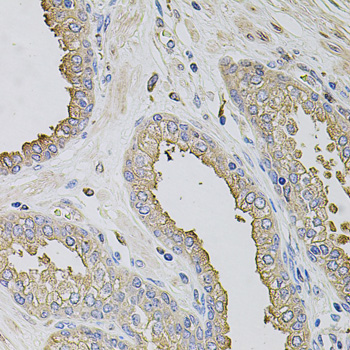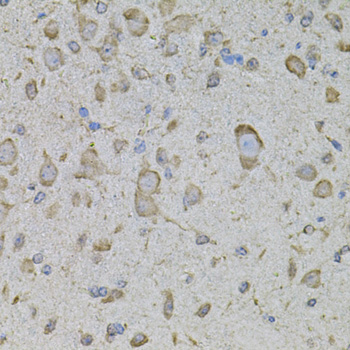-
Product Name
TRPV3 Polyclonal Antibody
- Documents
-
Description
Polyclonal antibody to TRPV3
-
Tested applications
WB, IHC
-
Species reactivity
Human, Mouse, Rat
-
Alternative names
TRPV3 antibody; FNEPPK2 antibody; OLMS antibody; VRL3 antibody; transient receptor potential cation channel subfamily V member 3 antibody
-
Isotype
Rabbit IgG
-
Preparation
Antigen: A synthetic peptide corresponding to a sequence within amino acids 400-500 of human TRPV3 (NP_659505.1).
-
Clonality
Polyclonal
-
Formulation
PBS with 0.02% sodium azide, 50% glycerol, pH7.3.
-
Storage instructions
Store at -20℃. Avoid freeze / thaw cycles.
-
Applications
WB 1:500 - 1:2000
IHC 1:50 - 1:200 -
Validations

Immunohistochemistry - TRPV3 Polyclonal Antibody
Immunohistochemistry of paraffin-embedded rat heart using TRPV3 antibody at dilution of 1:100 (40x lens).

Immunohistochemistry - TRPV3 Polyclonal Antibody
Immunohistochemistry of paraffin-embedded human prostate using TRPV3 antibody at dilution of 1:100 (40x lens).

Immunohistochemistry - TRPV3 Polyclonal Antibody
Immunohistochemistry of paraffin-embedded mouse brain using TRPV3 antibody at dilution of 1:100 (40x lens).
-
Background
Putative receptor-activated non-selective calcium permeant cation channel. It is activated by innocuous (warm) temperatures and shows an increased response at noxious temperatures greater than 39 degrees Celsius. Activation exhibits an outward rectification. May associate with TRPV1 and may modulate its activity. Is a negative regulator of hair growth and cycling: TRPV3-coupled signaling suppresses keratinocyte proliferation in hair follicles and induces apoptosis and premature hair follicle regression (catagen).
Related Products / Services
Please note: All products are "FOR RESEARCH USE ONLY AND ARE NOT INTENDED FOR DIAGNOSTIC OR THERAPEUTIC USE"
